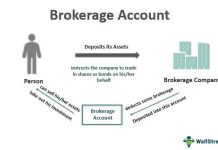Cost of Employee Benefits
When it comes to running a business, one of the key considerations is the cost of employee benefits. Providing attractive employee benefits packages is crucial for attracting and retaining top talent, but it’s important to understand the financial implications involved. In this article, we will delve into the various factors that contribute to the cost of employee benefits and provide you with comprehensive information to help you make informed decisions.
Understanding Employee Benefits
Employee benefits encompass a wide range of offerings provided by employers to their employees, beyond the basic salary or wages. These benefits can include health insurance, retirement plans, paid time off, flexible work arrangements, and more. While these benefits are valuable for employees, they come at a cost to employers.
Factors Influencing the Cost of Employee Benefits
Several factors contribute to the overall cost of employee benefits. Understanding these factors will help you manage your budget effectively and make informed decisions regarding the benefits you offer.
Health Insurance
Health insurance is often one of the most significant expenses for employers. The cost of providing health insurance depends on various factors such as the size of your workforce, the specific plan chosen, and the region you operate in. Premiums for health insurance plans can vary significantly, so it’s essential to compare different options and negotiate favorable rates with insurance providers.
Retirement Plans
Offering retirement plans such as 401(k) or pension schemes can also impact the cost of employee benefits. Employers may choose to contribute a certain percentage of their employees’ salaries to these plans, which can add up over time. Additionally, administrative fees associated with managing retirement plans should be taken into account.
Paid Time Off
Providing paid time off, including vacation days, sick leave, and holidays, is an essential part of employee benefits. While it may not directly incur a significant cost, it indirectly affects productivity and the need for temporary replacements during employees’ absences the cost of paid time off while maintaining a healthy work-life balance is crucial for both employees and employers.
Additional Perks and Benefits
Employers often provide additional perks and benefits to attract and retain top talent. These can include flexible work arrangements, wellness programs, employee discounts, and more. While the cost of these benefits may not be as substantial as health insurance or retirement plans, they still contribute to the overall cost of employee benefits.
Strategies to Manage the Cost of Employee Benefits
While providing competitive employee benefits is crucial, there are strategies you can implement to manage the associated costs effectively.
Conduct a Cost-Benefit Analysis
Before finalizing your employee benefits package, conduct a thorough cost-benefit analysis. Evaluate the potential return on investment (ROI) of each benefit and consider its impact on employee satisfaction and retention. This analysis will help you prioritize benefits that provide the most value while managing costs.
Explore Different Insurance Plans
When it comes to health insurance, explore different plans and providers to find the most cost-effective option. Consider factors such as coverage, deductibles, and co-pays, and negotiate rates with insurance providers. Additionally, consider implementing wellness programs to promote employee health and reduce long-term healthcare costs.
Optimize Retirement Plan Contributions
While retirement plans are valuable for employees, consider optimizing your contributions to manage costs effectively. Review your matching contributions and consider adjusting them based on your budget without compromising the attractiveness of the plan.
Communicate Benefits Effectively
Ensure that your employees fully understand the value of the benefits you provide. Communicate the details of each benefit and its associated costs This will help employees appreciate the investment you make in their well-being and reduce any misconceptions about the cost of employee benefits.

Providing attractive employee benefits is a vital aspect of running a successful business. While the cost of employee benefits can be significant, understanding the factors influencing these costs and implementing effective strategies can help you manage your budget while offering competitive benefits. By carefully analyzing the cost-benefit ratio of each benefit and exploring cost-saving opportunities, you can strike a balance between attracting and retaining top talent and maintaining financial stability.
Frequently Asked Questions – Cost of Employee Benefits
1. What are employee benefits?
Employee benefits are non-wage compensations provided to employees in addition to their regular salaries. These benefits can include health insurance, retirement plans, paid time off, and more.
2. How much do employee benefits typically cost?
The cost of employee benefits varies depending on the type and level of benefits offered by the employer. On average, employee benefits can account for about 30% of an employee’s total compensation.
3. What are some common types of employee benefits?
Common types of employee benefits include health insurance, dental and vision coverage, retirement plans (such as 401(k)), life insurance, disability insurance, paid time off (vacation and sick leave), and flexible spending accounts.
4. How do employers determine the cost of offering employee benefits?
Employers typically assess the cost of offering employee benefits by considering factors such as the number of employees, the type of benefits offered, the level of coverage, and the overall financial resources of the company.
5. Are employers required by law to provide employee benefits?
In most countries, employers are not legally required to provide employee benefits. However, certain benefits like social security contributions or healthcare coverage may be mandatory in some jurisdictions.
6. Can the cost of employee benefits be deducted from taxes?
In many cases, the cost of providing employee benefits can be tax-deductible for employers. However, tax laws and regulations vary by country and it’s advisable to consult with a tax professional for specific guidance.
7. How can employers manage the rising cost of employee benefits?
Employers can manage the rising cost of employee benefits by exploring different benefit options, negotiating better rates with insurance providers, implementing wellness programs to improve employee health, and promoting cost-sharing strategies with employees.
8. Do employee benefits affect employee retention?
Yes, employee benefits can have a significant impact on employee retention. Offering attractive benefits can help attract and retain top talent, increase job satisfaction, and improve overall employee morale.
9. What are the potential consequences of not offering competitive employee benefits?
Not offering competitive employee benefits can result in difficulties attracting and retaining skilled employees, lower employee morale, increased turnover rates, and potentially negative impacts on the company’s reputation.
10. How can employers communicate the value of employee benefits to their workforce?
Employers can effectively communicate the value of employee benefits by providing clear and transparent information about the benefits offered, conducting educational sessions or workshops, and offering personalized guidance to employees.




